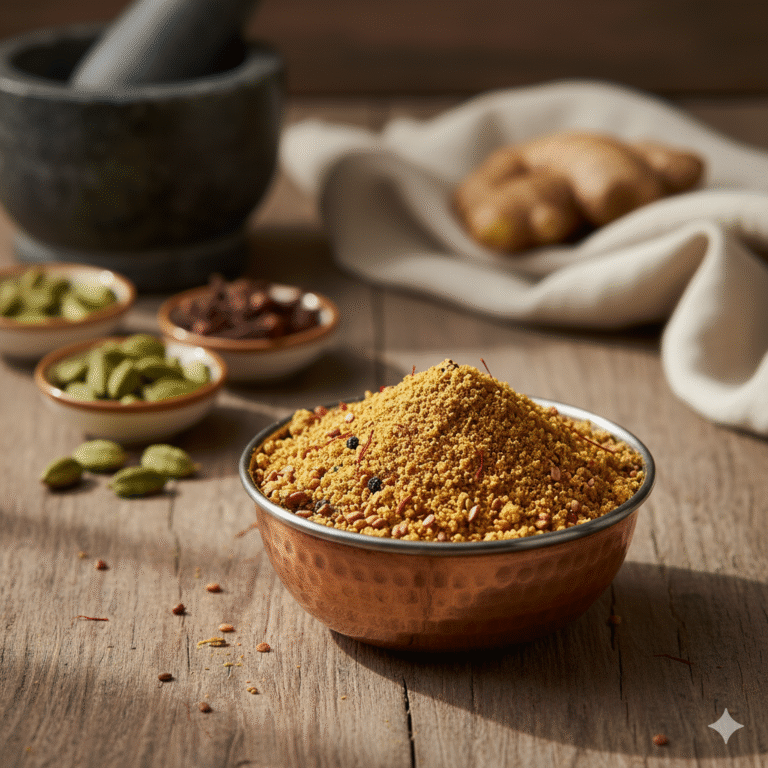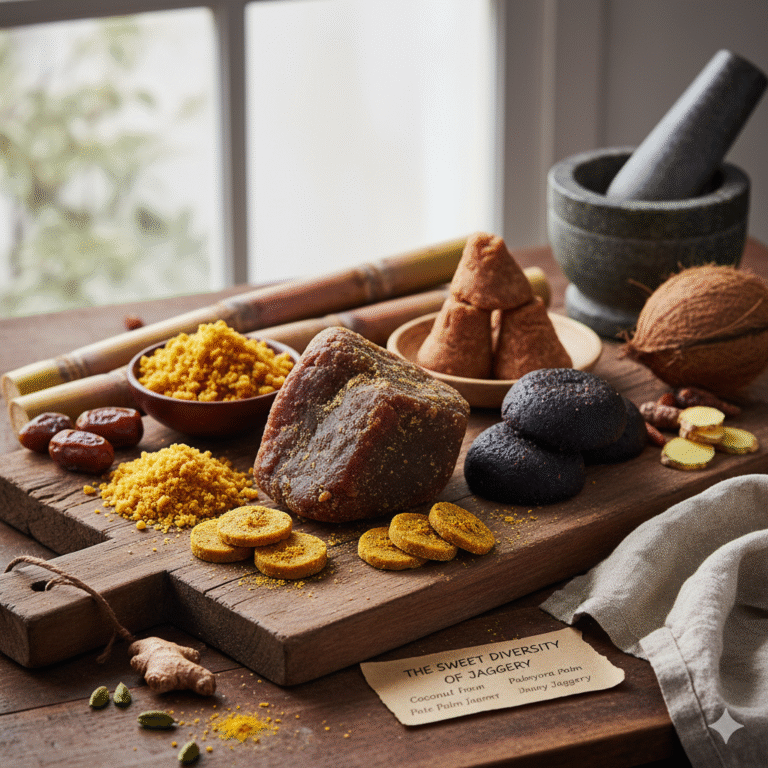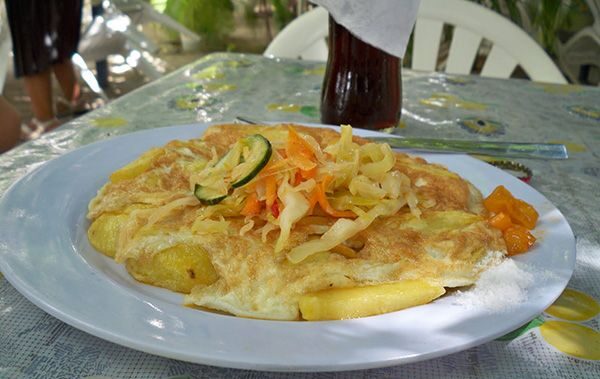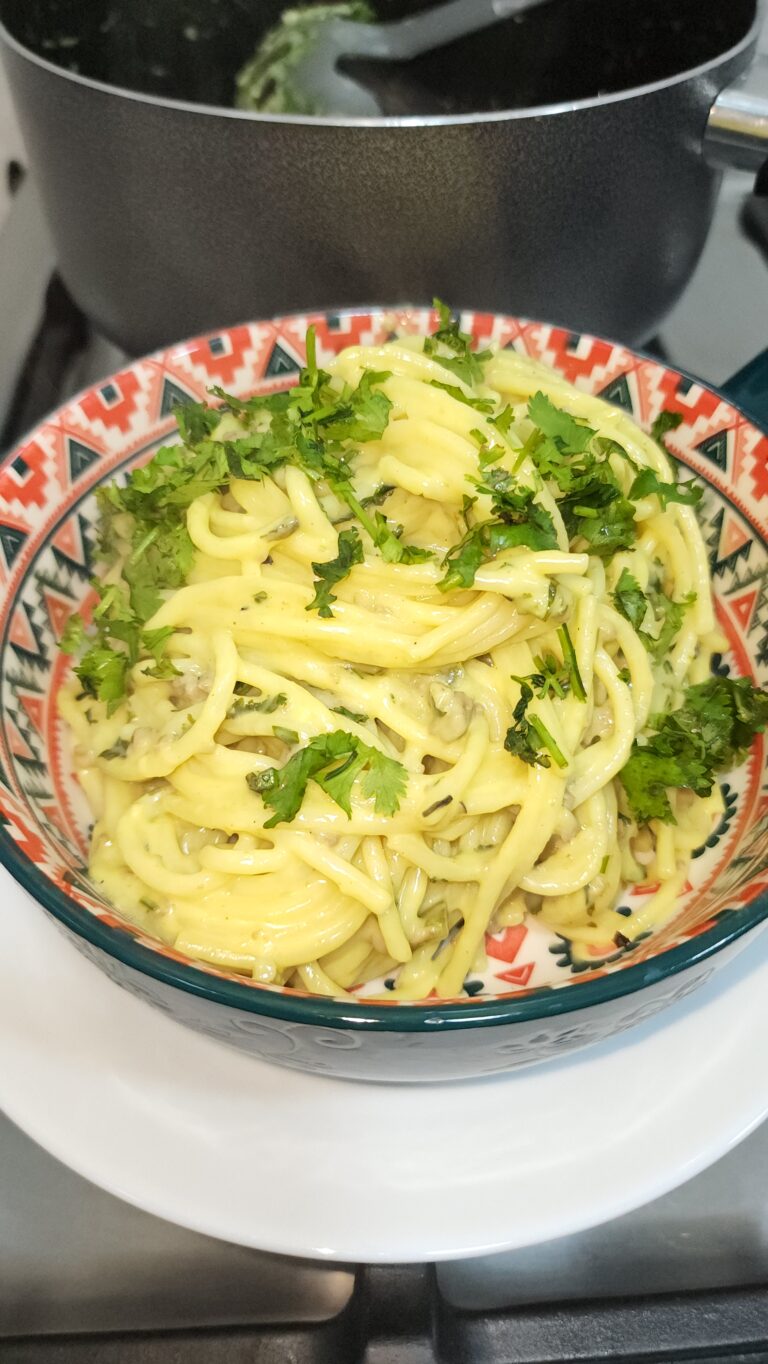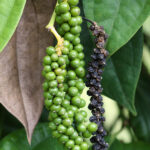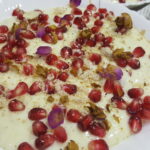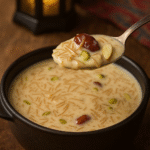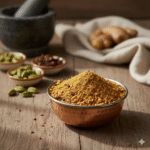The Best Fluffy Pancakes recipe you will fall in love with. Full of tips and tricks to help you make the best pancakes.
If you ask me what East Africa tastes like, I’ll say it’s the warmth of coconut, the hum of cardamom, the crackle of chillies, and the smoke of a charcoal grill drifting through a lively street. I remember burning my fingertips on a just-off-the-tawa chapati in Nairobi, scooping up sukuma wiki with a piece of ugali, and thinking, “This is home—even if I’m just passing through.”
In this guide, we’ll dive into five unmissable East African dishes, the key spices behind them, easy techniques to make them shine, and a few beginner tips so you can confidently cook along at home. Start small, taste as you go, and adjust to your comfort—that’s the East African way.
Table of contents
- Ugali with Sukuma Wiki (+ curry, fried chicken/fish & chapati) — Kenya
- Nyama Choma with Grilled Plantain — Kenya & Tanzania
- Ugandan Rolex — Uganda
- Sururu & Mishkaki — Dar es Salaam & Mombasa
- Swahili Pilau or Biryani with Kachumbari (+ Pili Pili ya Kukaanga) — Coastal cities
- Mombasa Breakfast: Mahamri with Mbarazi, Vitumbua, Vibibi & Mkate wa Sinia
- Key spices (what they are and how to use them)
- Unique spice blends (flavour profiles & best pairings)
- Sourcing tips (where to buy authentic spices)
- Cooking techniques that boost flavour
- Health & cultural notes
- Tips for beginners
- Wrap-up & call to action
1) Ugali with Sukuma Wiki (+ curry, fried chicken/fish & chapati) — Kenya
What it is:
Ugali is Kenya’s beloved staple—steamed maize meal that’s firm enough to pinch and scoop. Sukuma wiki (collard greens) is sautéed with onions, tomatoes, and a whisper of garlic. On the side, you’ll often find simple chicken or fish curry, or crispy fried chicken/fish, and a hot, flaky chapati.
Why you’ll love it:
It’s comforting, nourishing, and endlessly adaptable. The ugali acts like a spoon, the sukuma brings gentle warmth, and the curry/fried sides add richness.
How to order/eat:
Pinch ugali, press into the sukuma, then dip into the curry. If you’re new to chillies, start mild and build up. I remember the first time I tried a squeeze of lemon over fried fish—game changer.
Learn more / related:
- Internal: Pantry Glossary – Maize Flour & Collards
- External: A simple overview of Ugali
2) Nyama Choma with Grilled Plantain — Kenya & Tanzania
What it is:
Nyama choma literally means “roasted meat”—usually goat or beef, salted, sometimes lightly marinated with garlic and lemon, then slow-grilled over charcoal. In Tanzania, add grilled plantain for a sweet-smoky balance.
Flavour mood:
Smoky, savoury, primal. Best shared with friends, a fresh salad, and maybe a cold soda on a hot afternoon.
Ordering tip:
Ask for medium to well-done if you prefer a firmer chew. Meanwhile, request extra lemon wedges and a small dish of salt—classic, simple, perfect.
Related reads:
- Internal: Street-Grill Basics: From Skewers to Steaks
- External: Plantain basics
3) Ugandan Rolex — Uganda
What it is:
Not the watch! A Rolex is a street-side marvel: a fresh chapati rolled up with an omelette (eggs, onion, tomato, optional peppers). It’s fast, filling, and ridiculously satisfying.
When to have it:
Breakfast on the go or a late-night bite. I once stood at a Kampala cart and watched the vendor flip chapati in the time it took to say “two eggs, please.”
Tweak it:
Add cabbage or a smear of chilli for extra crunch and heat.
More info:
- External: Ugandan street food culture
4) Sururu & Mishkaki — Dar es Salaam & Mombasa
What they are:
- Sururu (Dar es Salaam): Tiny coastal fish, spiced, lightly battered or floured, then fried until shatter-crisp. A squeeze of lime and a pinch of salt make them sing.
- Mishkaki (Dar & Mombasa): Charcoal-grilled skewers—beef, chicken, or mutton—marinated with garlic, ginger, cumin, lemon, and a touch of chilli. Think East African kebabs with seaside swagger.
How to enjoy:
Order a mixed plate with chipsi (fries) or chapati, plus a side of chilli (see pili pili ya kukaanga below). Don’t skip the onions and lemon on the side—they cut the richness beautifully.
Related:
- Internal: Grilling 101: Mishkaki Marinade at Home
- External: Kebabs around the world
5) Swahili Pilau or Biryani with Kachumbari (+ Pili Pili ya Kukaanga) — Mombasa & Dar es Salaam
The choice:
- Swahili pilau: Fragrant rice spiced with cardamom, cloves, cinnamon, cumin, and black pepper, often cooked with beef or chicken stock.
- Swahili biryani: Layered rice and masala with deeper, saucier flavours; served with a tangy side like kachumbari (tomato–onion–chilli salad).
Don’t miss this side:
Pili Pili ya Kukaanga (also “pili pili ya kukkanga”) — Kenyan fried chilli chutney
A sizzling chilli relish quickly fried with garlic and sometimes tomato or vinegar. It’s punchy, bright, and absolutely addictive with pilau, biryani, or grilled meats. Start with a small spoonful, then adjust to your taste.
Helpful links:
- Internal: Pilau Masala — Make Your Own Blend
- External: Biryani overview
6) Mombasa Breakfast: Mahamri with Mbarazi, Vitumbua, Vibibi & Mkate wa Sinia
The spread:
- Mahamri: Puffy, gently sweet fried bread enriched with coconut milk; lightly perfumed with cardamom.
- Mbarazi: Pigeon peas simmered in creamy coconut sauce—silky, comforting, and the classic partner to mahamri.
- Vitumbua: Soft rice-flour pancakes with a tender centre.
- Vibibi: Coconut-based pancakes, slightly chewy and fragrant.
- Mkate wa Sinia: A steamed or baked semolina-coconut cake, beautifully spiced and often garnished with sesame.
A moment to remember:
I still smile thinking about a dawn breakfast in Old Town Mombasa—steam curling off mbarazi, mahamri stacked high, and that first sip of hot chai. Simple. Perfect.
Learn more:
- Internal: Swahili Breakfast Basics
- External: Pigeon peas
Key spices (what they are & how to use them)
Start small, smell each spice, and toast lightly to understand its character.
- Cardamom (green pods): Sweet-floral; crush pods to flavour pilau, chai, mahamri.
- Cloves: Warm, slightly numbing; add a few to pilau/biryani and chai.
- Cumin (whole & ground): Earthy; toast seeds for mishkaki marinades and curries.
- Coriander seed: Citrusy; grind fresh for kachumbari dressings and marinades.
- Black pepper: Sharp heat; crack over grills and stews.
- Cinnamon (sticks): Sweet-woody; use in pilau and biryani masala.
- Turmeric: Warm colour; moderate in fish/chicken curries.
- Ginger & garlic: Fresh, zesty backbone for mishkaki, curries, sukuma wiki.
- Fresh chillies: From mild to fiery; essential for pili pili ya kukaanga.
(Note: I keep my blends halal and steer clear of nutmeg, mace, poppy seeds, and hing.)
Unique spice blends (flavour profile & best pairings)
- Pilau Masala: Cardamom, cloves, cinnamon, cumin, black pepper.
- Profile: Warm, aromatic, balanced.
- Use for: Pilau, beef/chicken rice dishes.
- Mishkaki Marinade: Garlic, ginger, cumin, lemon, a little chilli, pinch of coriander.
- Profile: Bright, smoky when grilled.
- Use for: Beef/chicken skewers.
- Fish Fry Rub (Sururu): Garlic powder, turmeric, black pepper, salt; optional chilli.
- Profile: Lightly spiced, crisp finish.
- Use for: Sururu, fried fish fillets.
- Chilli Relish Base (Pili Pili ya Kukaanga): Fresh chillies, garlic, a touch of vinegar or lemon, quick fry in oil.
- Profile: Fiery, tangy, addictive.
- Use for: Pilau, biryani, grills, chipsi.
Sourcing tips (authentic & fresh)
- In East Africa: Visit old-town spice stalls and coastal markets for whole spices and fresh chillies—buy small amounts, often.
- Abroad (UK/Global): Try trusted African, Middle Eastern, or Indian grocers; look for whole spices with bright aroma and recent pack dates.
- Online: Choose suppliers that list harvest/pack dates and origin. Whole spices keep longer and taste better when freshly ground.
- Handy internal resources:
Cooking techniques that boost flavour
- Bloom & toast: Warm whole spices in a dry pan until fragrant, then grind.
- Sauté base (mchuzi wa kukaanga style): Gently cook onions in oil, add ginger-garlic, then spices—this unlocks depth for curries.
- Marinate smart: Acid (lemon/vinegar) + spice + time transforms mishkaki and fried fish.
- Rest your rice: After cooking pilau/biryani, rest 10 minutes before fluffing—grains stay separate, aromas settle.
- Fry fast: For pili pili ya kukaanga, cook quickly to keep the chillies bright and lively.
Health & cultural notes
- Balanced spice = easier digestion: Ginger, garlic, and black pepper support digestion when used moderately.
- Coconut richness: Many coastal dishes use coconut milk—rich but naturally dairy-free. Adjust thickness with water if you prefer lighter sauces.
- Sharing matters: Meals like nyama choma and pilau are social—serving family-style is part of the joy.
- Halal focus: Meat grills and curries are traditionally prepared with halal practices across much of Kenya and Tanzania—always check, then enjoy with confidence.
Tips for beginners (you’ve got this!)
- Start with one dish: Try pilau first; it teaches spice balance without overwhelming.
- Measure spices by scent: If it smells intense in the jar, use less; you can always add more later.
- Keep a chilli scale: Make a mild pili pili ya kukaanga, then add heat per plate so everyone’s happy.
- Taste at every step: Salt, acid, and sweetness should feel balanced—lemon often fixes a flat-tasting dish.
- Batch your blends: Mix pilau masala for a month’s use; label the jar and store cool and dark.
From ugali & sukuma wiki to mahamri with mbarazi, East Africa invites you to eat with your hands, share your plate, and savour spice in a way that feels like a hug. Try one dish this week. Then another. Swap pilau for biryani, add that spoon of pili pili ya kukaanga, and make it yours.
Of course, this is only a taste. East Africa—especially Tanzania and Kenya—has so many incredible local foods worth discovering, and I’ll be sharing more about them in my upcoming blogs. But if you’re visiting soon, these five dishes are the ones you absolutely cannot miss!
Your turn: Which dish are you cooking first—pilau or mishkaki? I’d love to hear how it goes.
Let’s stay connected:
- 💌 Email your thoughts, questions, or recipe requests: business@bohrarasoi.com
- 📸 Follow my daily food stories on Instagram: @eastafrican.foodie & @bohrarasoi
- ▶️ Watch & subscribe on YouTube: East African Foodie and Bohra Rasoi
Comment, share, and tell me what kind of blogs you’d love to read next—street-food deep dives, spice-by-spice guides, or step-by-step home cooks’ versions of restaurant favourites.

